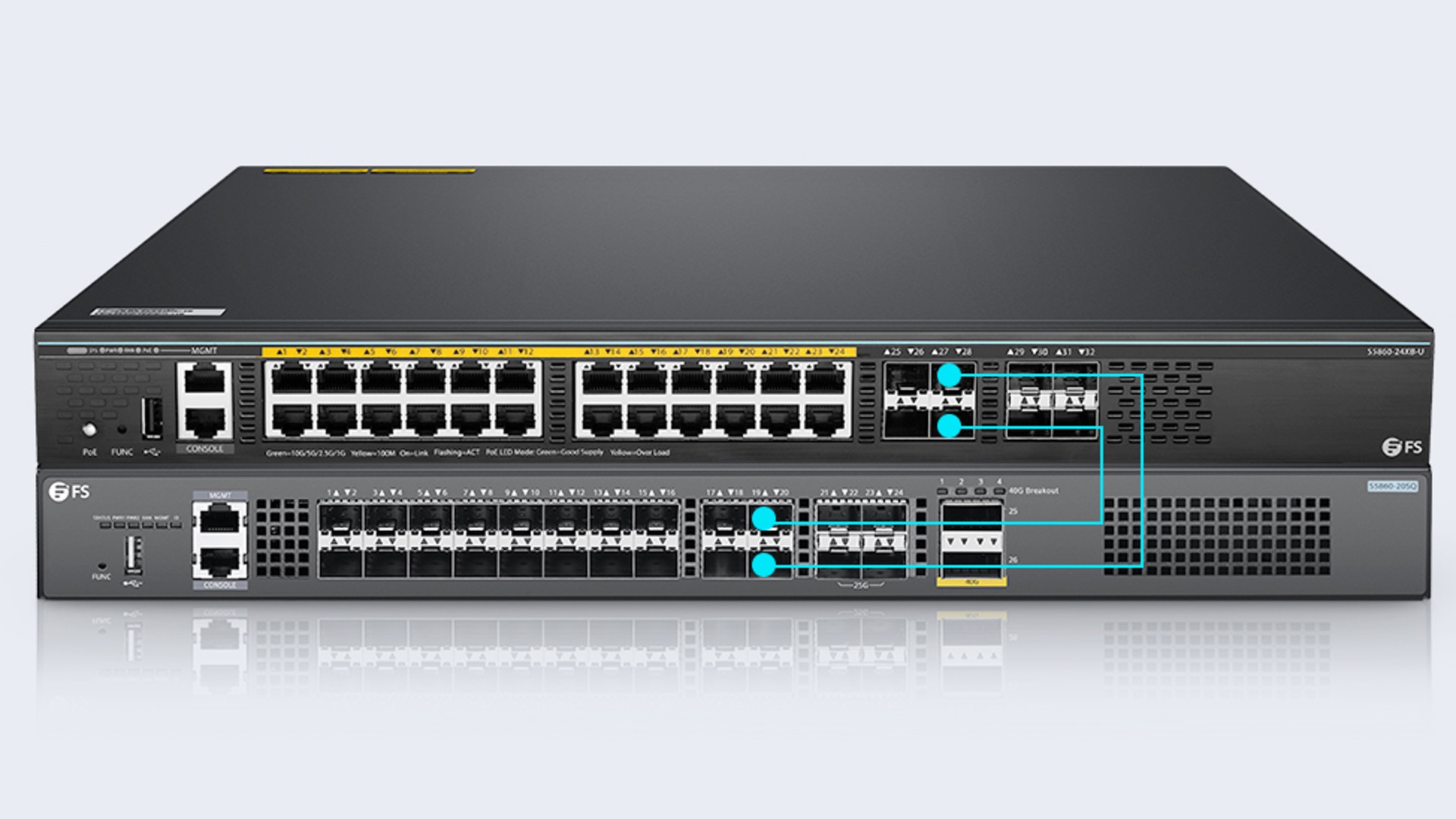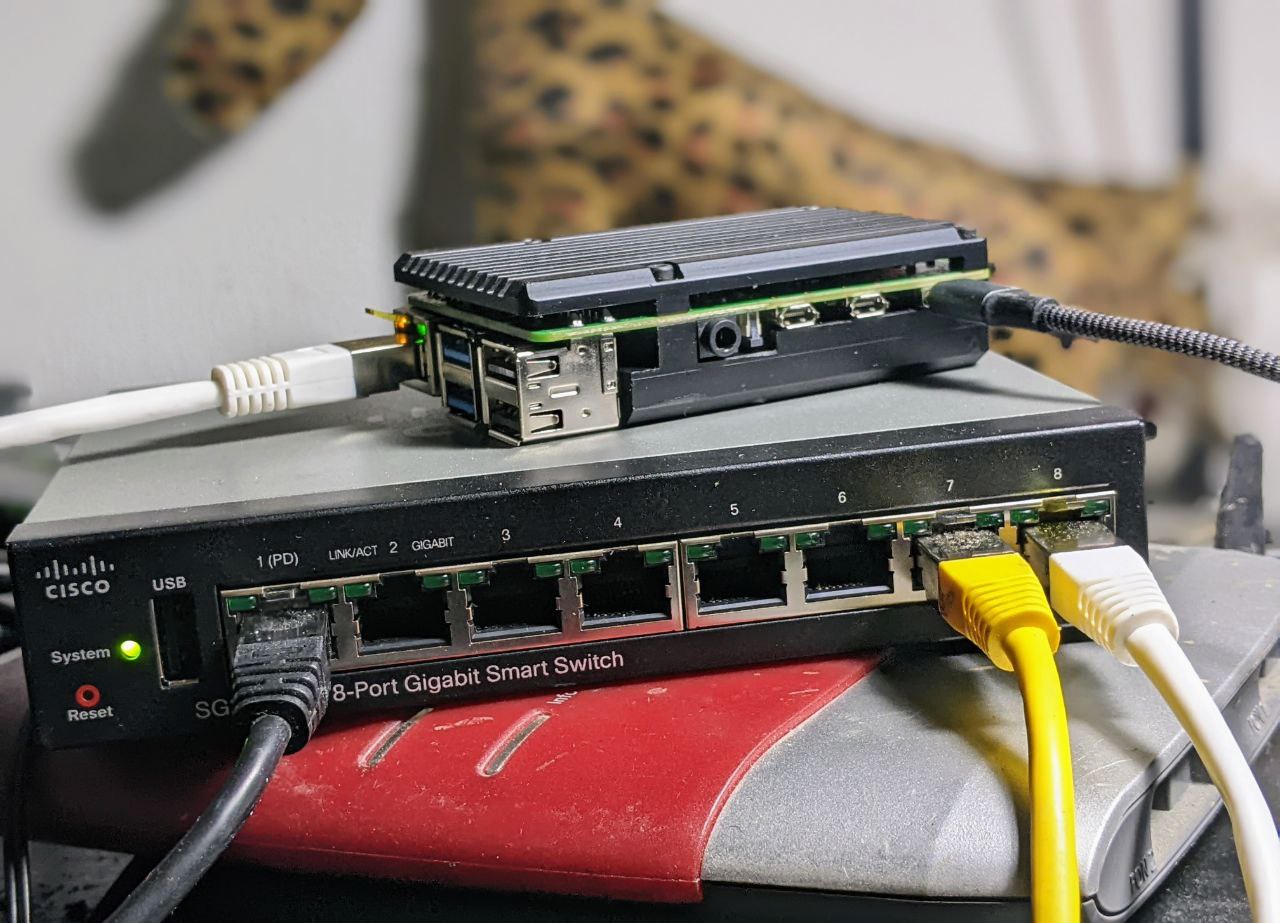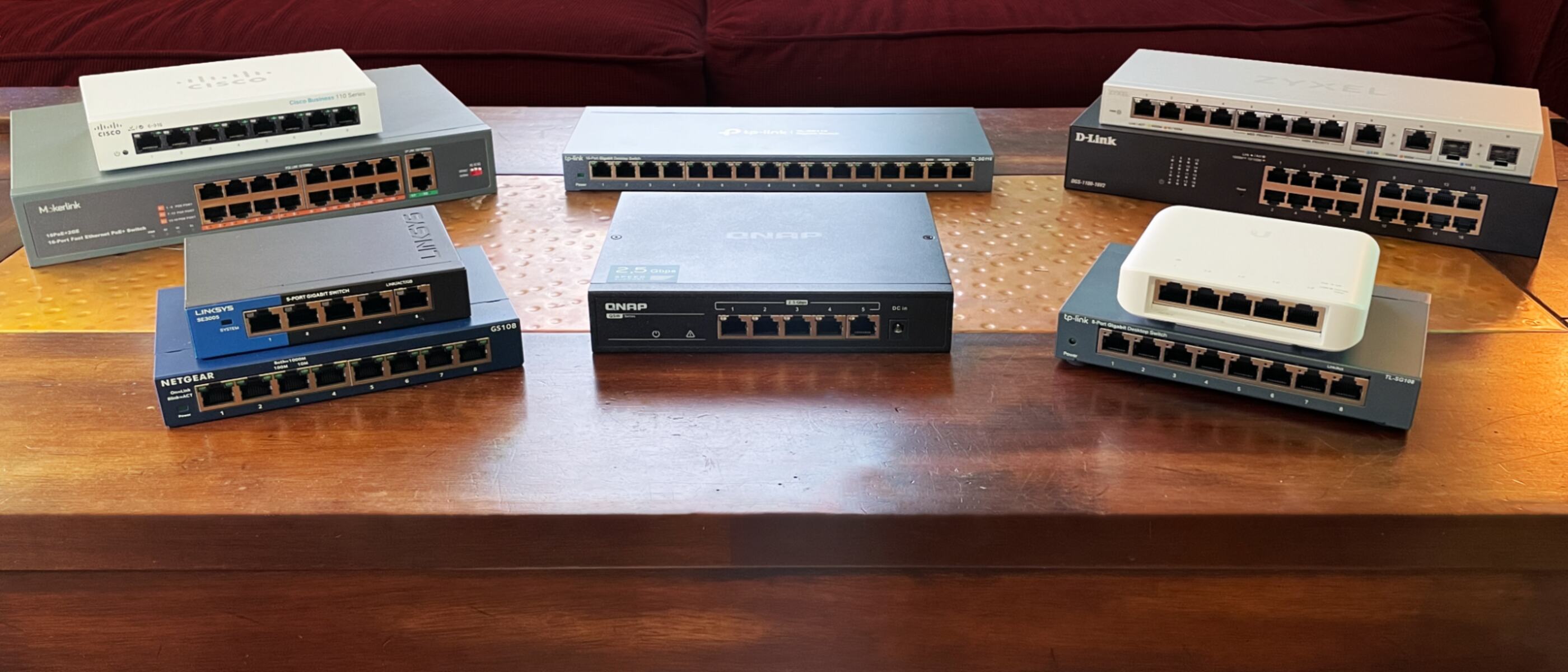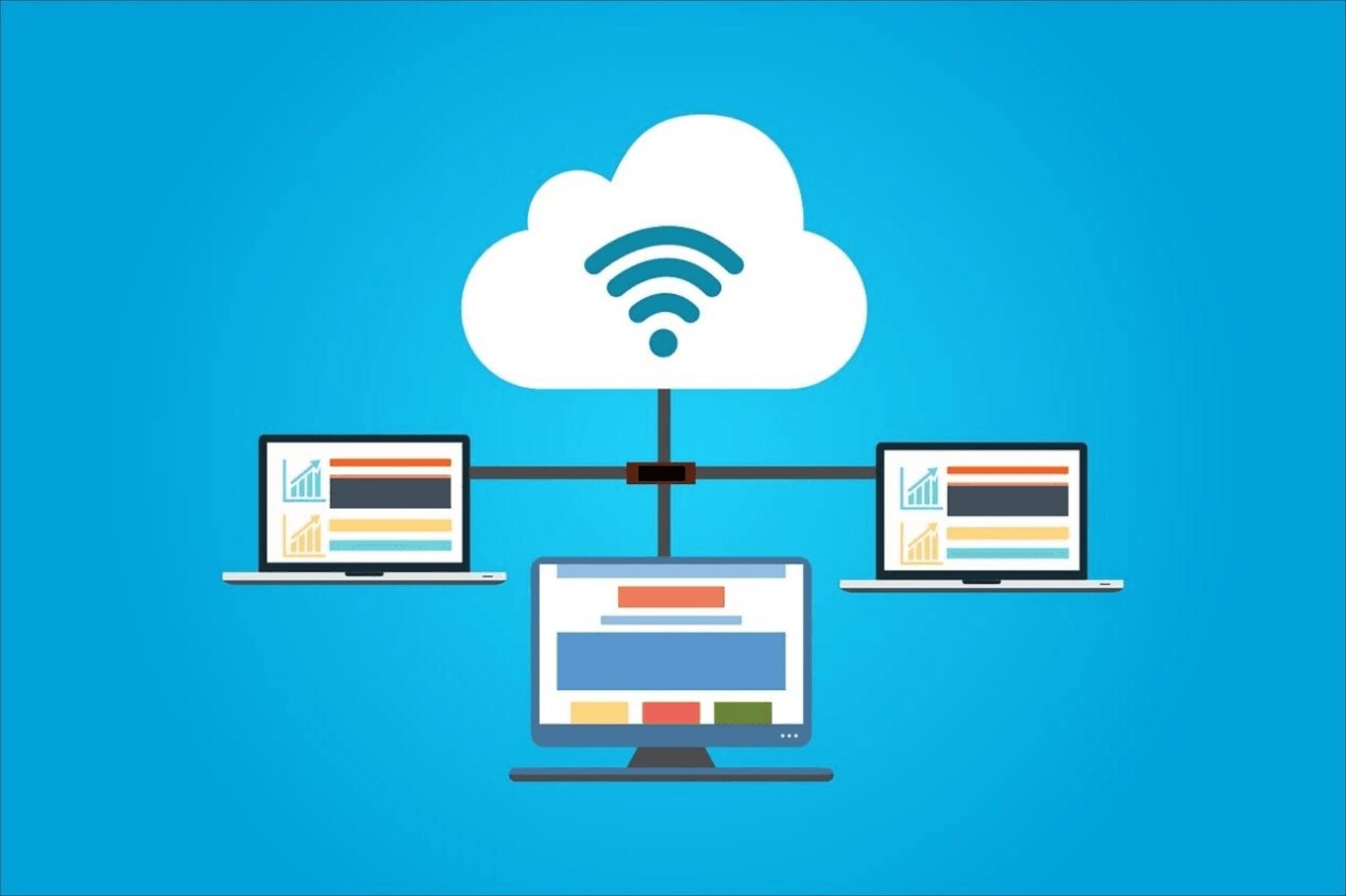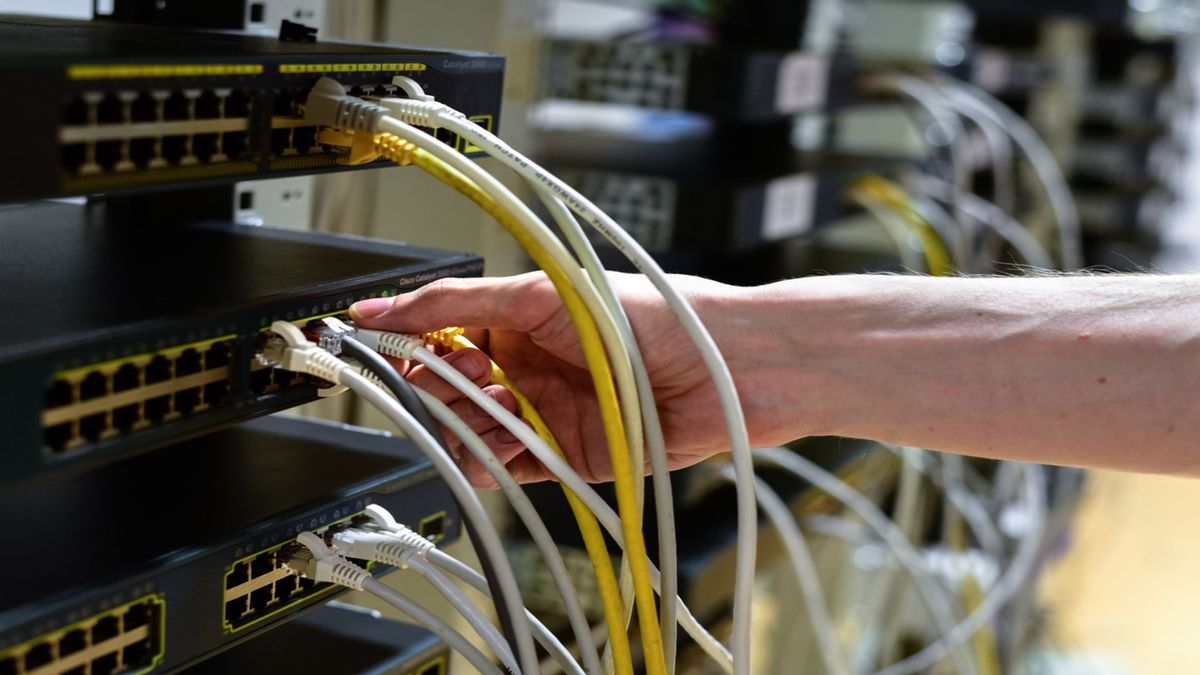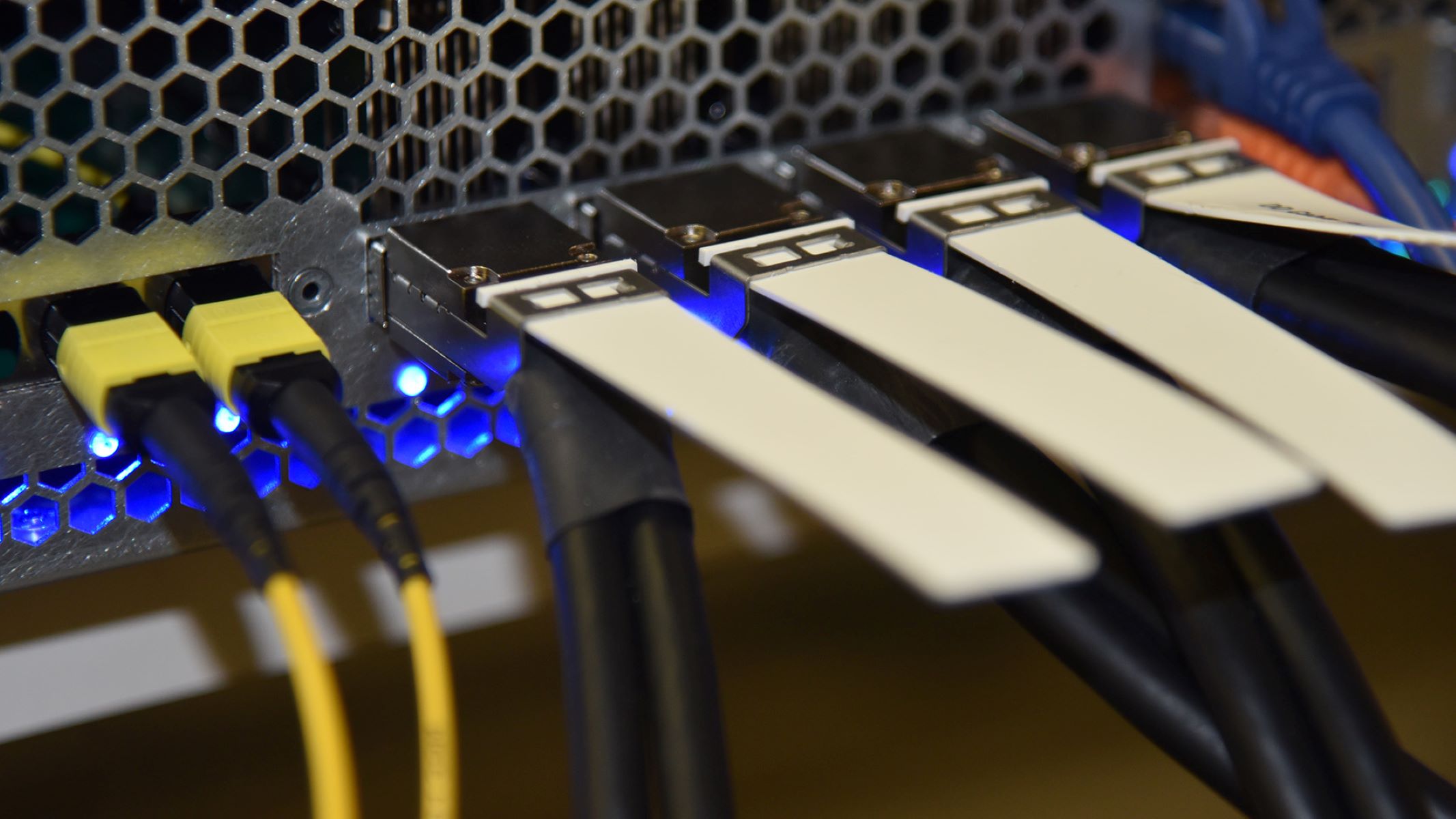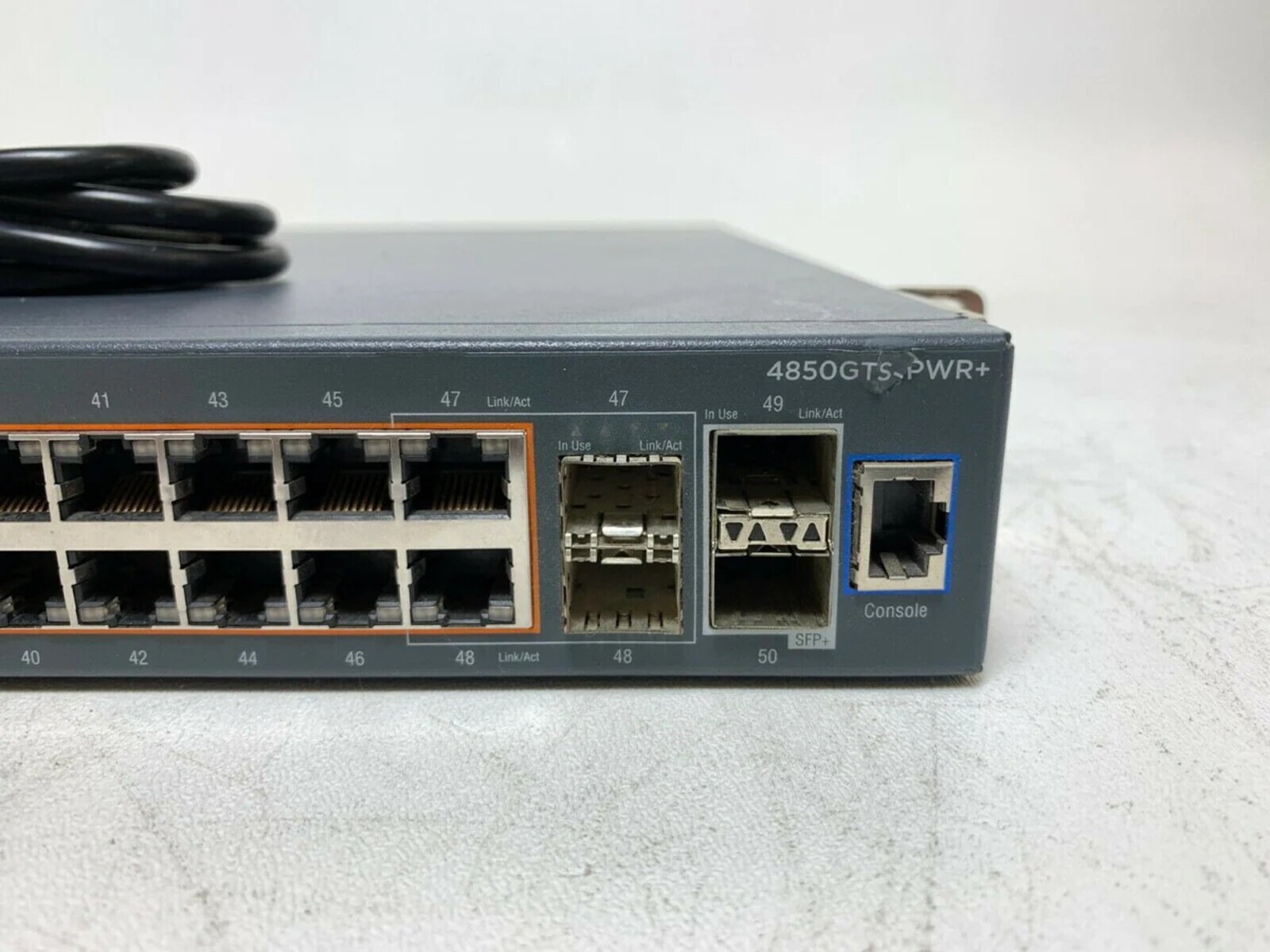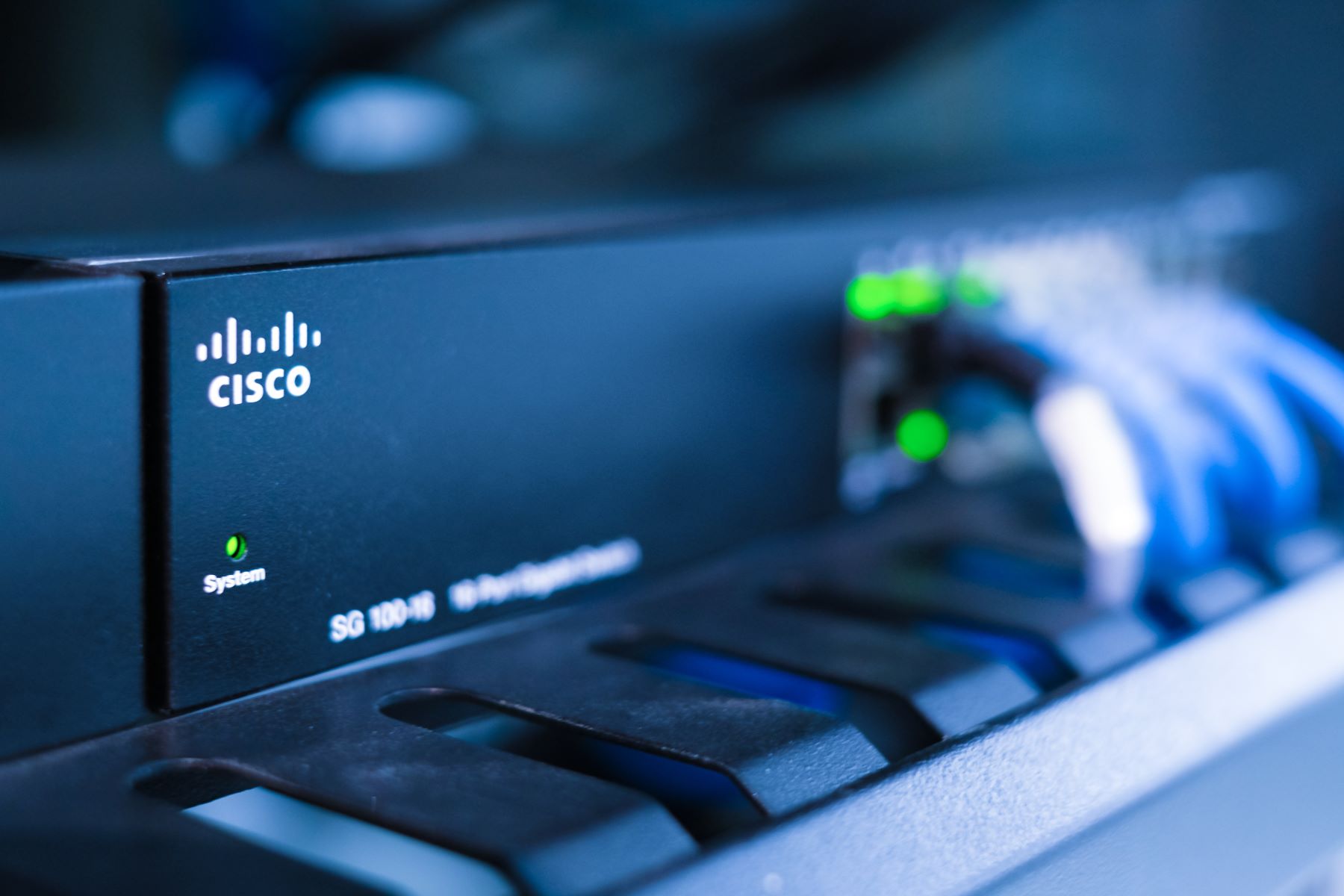**
Introduction
**
In the realm of networking, the term "trunking" holds a significant place, offering a solution to streamline data transmission and optimize network performance. Network switch trunking, often referred to as port trunking, link aggregation, or Ethernet bonding, is a technique employed to combine multiple physical links into a single logical link. This process not only enhances the bandwidth but also provides redundancy, fault tolerance, and load balancing capabilities.
The implementation of network switch trunking has become increasingly prevalent in modern network infrastructures, as organizations strive to meet the escalating demands for high-speed and reliable connectivity. By delving into the intricacies of network switch trunking, we can gain a comprehensive understanding of its functionality, benefits, and considerations for deployment.
Understanding the fundamentals of network switch trunking is crucial for network administrators, IT professionals, and businesses seeking to optimize their network resources. This article aims to unravel the intricacies of network switch trunking, shedding light on its significance, benefits, operational mechanisms, and best practices for implementation. Let's embark on a journey to explore the realm of network switch trunking and unravel its potential to revolutionize network performance and reliability.
**
What is Network Switch Trunking?
Network switch trunking, in the context of computer networking, refers to the process of combining multiple physical connections between network switches into a single logical link. This aggregation of links enables the network to function as if it were a single high-bandwidth link, thereby enhancing the overall performance and efficiency of data transmission.
At its core, network switch trunking allows for the simultaneous utilization of multiple network connections, effectively expanding the available bandwidth and promoting fault tolerance. By bundling multiple links together, network switch trunking facilitates load balancing, ensuring that data traffic is distributed evenly across the aggregated links.
One of the key aspects of network switch trunking is its ability to provide redundancy, thereby mitigating the risk of network downtime in the event of a link failure. In essence, if one of the physical links within the trunk fails, the remaining links continue to handle the network traffic seamlessly, preserving connectivity and minimizing disruptions.
Furthermore, network switch trunking plays a pivotal role in optimizing network resource utilization. By consolidating multiple links into a single logical link, organizations can harness the combined capacity of these connections, effectively maximizing the network’s throughput and accommodating the escalating demands of data-intensive applications and services.
Network switch trunking is commonly implemented in scenarios where high availability, increased bandwidth, and efficient network utilization are paramount. It is particularly beneficial in environments where data transfer speeds, reliability, and fault tolerance are critical considerations, such as enterprise networks, data centers, and telecommunications infrastructure.
As we delve deeper into the realm of network switch trunking, it becomes evident that this technique holds immense potential to elevate network performance, resilience, and scalability. By harnessing the power of aggregation and load balancing, network switch trunking empowers organizations to optimize their network resources and meet the evolving demands of modern networking environments.
**
Benefits of Network Switch Trunking
Network switch trunking offers a myriad of advantages that significantly enhance the performance, reliability, and scalability of network infrastructures. By leveraging the capabilities of trunking, organizations can unlock a host of benefits that contribute to a more robust and efficient networking environment.
First and foremost, network switch trunking facilitates enhanced bandwidth utilization and improved data transfer speeds. By aggregating multiple physical links into a single logical link, trunking effectively increases the available bandwidth, allowing for the seamless transmission of large volumes of data across the network. This heightened bandwidth capacity is particularly advantageous in scenarios where high-speed data transfer and low latency are imperative, such as in multimedia streaming, real-time communications, and data-intensive applications.
Moreover, network switch trunking delivers fault tolerance and link redundancy, bolstering the resilience of the network infrastructure. In the event of a link failure, the remaining aggregated links continue to handle the network traffic, ensuring uninterrupted connectivity and mitigating the impact of potential disruptions. This inherent redundancy minimizes the risk of network downtime and fortifies the network against single points of failure, thereby enhancing overall reliability.
Another notable benefit of network switch trunking is load balancing, which optimizes the distribution of network traffic across the aggregated links. This dynamic allocation of traffic ensures that the network resources are utilized efficiently, preventing congestion on individual links and promoting equitable utilization of available bandwidth. As a result, organizations can achieve better network performance and responsiveness, even during peak usage periods.
Furthermore, network switch trunking simplifies network management and administration by consolidating multiple links into a single logical entity. This streamlined approach reduces the complexity of network configurations, simplifies troubleshooting, and enhances operational efficiency. Additionally, trunking facilitates scalability, allowing organizations to accommodate the growing demands of their network infrastructure without compromising performance or reliability.
Overall, the benefits of network switch trunking extend beyond mere bandwidth aggregation, encompassing fault tolerance, load balancing, resilience, and simplified network management. By harnessing these advantages, organizations can elevate the performance and dependability of their network environments, paving the way for enhanced productivity and seamless connectivity.
**
How Does Network Switch Trunking Work?
Network switch trunking operates by combining multiple physical links, typically Ethernet connections, into a single logical link, thereby creating an aggregated interface with increased bandwidth and fault tolerance. This process involves the utilization of a standardized protocol, such as Link Aggregation Control Protocol (LACP) or the proprietary EtherChannel protocol, to establish and manage the aggregated links within the network infrastructure.
At the core of network switch trunking lies the concept of link aggregation, which enables the parallel operation of multiple physical links as a unified logical link. This aggregation is achieved through the bundling of individual links, allowing them to function collectively to enhance the overall bandwidth and resilience of the network.
When implementing network switch trunking, network switches utilize a designated port channel or trunk group to bind the aggregated links together. This port channel serves as the virtual interface through which the combined links operate as a single logical entity. By consolidating the links into a port channel, the network switch effectively presents a unified interface to the connected devices, concealing the underlying complexity of the aggregated links.
Furthermore, network switch trunking leverages load balancing algorithms to distribute incoming network traffic across the aggregated links in a balanced manner. This dynamic distribution of traffic ensures that the network resources are utilized efficiently, preventing congestion on individual links and optimizing the overall throughput of the trunked interface.
Underpinning the functionality of network switch trunking is the seamless integration of the aggregated links into the existing network infrastructure. Once the trunking configuration is established, the aggregated interface operates transparently, enabling the network to harness the combined bandwidth and fault tolerance without requiring extensive modifications to the network topology.
It is imperative to note that the successful deployment of network switch trunking hinges on the consistent configuration and synchronization of the aggregated links across the interconnected network switches. This coordination ensures that the trunked links operate in unison, facilitating efficient data transmission, fault tolerance, and load balancing capabilities.
By understanding the operational mechanisms of network switch trunking, organizations can harness the power of link aggregation to optimize their network performance, resilience, and scalability, thereby laying the foundation for a robust and efficient networking infrastructure.
**
Types of Network Switch Trunking
Network switch trunking encompasses various methodologies and protocols that enable the aggregation of multiple physical links into a unified logical link. These diverse approaches cater to different networking environments and requirements, offering flexibility and scalability in implementing trunking solutions. The following are some of the prominent types of network switch trunking:
- Link Aggregation Control Protocol (LACP): LACP, defined in the IEEE 802.3ad standard, is a widely adopted protocol for dynamic link aggregation. LACP facilitates the automatic formation and maintenance of link aggregation groups, allowing network switches to negotiate the aggregation of links and dynamically adjust the aggregated configuration based on network conditions. This dynamic nature of LACP enhances flexibility and adaptability in trunking configurations, making it well-suited for environments requiring seamless scalability and fault tolerance.
- EtherChannel: EtherChannel, a proprietary protocol developed by Cisco, enables the bundling of multiple physical links into a logical link. This protocol provides a static configuration approach, allowing network administrators to manually define the aggregated links and their operational parameters. EtherChannel offers simplicity and predictability in trunking setups, making it suitable for environments where a static configuration is preferred or mandated.
- Static Trunking: In some network environments, static trunking, also known as static link aggregation, is employed to manually configure and bundle specific physical links into a trunk group. Unlike dynamic protocols such as LACP, static trunking relies on predetermined configurations that do not dynamically adapt to network changes. While static trunking lacks the dynamic adjustment capabilities of LACP, it provides a straightforward and deterministic approach to link aggregation, offering stability and predictability in trunking setups.
Each type of network switch trunking protocol presents distinct characteristics and operational nuances, catering to diverse networking requirements and preferences. The selection of a trunking protocol is influenced by factors such as network scalability, fault tolerance needs, administrative control, and compatibility with existing network infrastructure.
By understanding the various types of network switch trunking, organizations can make informed decisions regarding the selection and implementation of trunking protocols, aligning the chosen methodology with the specific demands and objectives of their network environments.
**
Considerations for Implementing Network Switch Trunking
Implementing network switch trunking entails careful consideration of various factors to ensure the successful deployment and optimal performance of trunked interfaces within the network infrastructure. By addressing key considerations, organizations can effectively harness the benefits of trunking while mitigating potential challenges and ensuring seamless integration with existing network components.
Compatibility and Standards Compliance: When implementing network switch trunking, it is essential to verify the compatibility of trunking protocols and standards across the interconnected network switches. Ensuring consistent support for trunking protocols, such as Link Aggregation Control Protocol (LACP) or proprietary aggregation protocols, promotes interoperability and facilitates the establishment of aggregated links without compatibility issues.
Network Topology and Redundancy: The network topology plays a crucial role in determining the placement and configuration of trunked interfaces. Organizations must assess the network topology to identify optimal locations for deploying trunked links, considering factors such as network segment boundaries, redundancy requirements, and traffic patterns. By strategically placing trunked interfaces, organizations can maximize fault tolerance and optimize network performance.
Load Balancing and Traffic Distribution: Effective load balancing mechanisms are integral to the performance of trunked interfaces. Organizations should evaluate load balancing algorithms supported by trunking protocols to ensure equitable distribution of network traffic across the aggregated links. By configuring robust load balancing strategies, organizations can prevent link congestion and optimize the utilization of available bandwidth, enhancing overall network responsiveness.
Configuration Consistency and Management: Consistent configuration of trunked interfaces is paramount to their seamless operation within the network. Network administrators must adhere to uniform configuration parameters across the aggregated links, ensuring synchronization and coherence in trunking setups. Additionally, streamlined management of trunked interfaces, including monitoring, troubleshooting, and maintenance, is essential to sustain the reliability and performance of the trunked links.
Scalability and Future Expansion: Organizations should anticipate future scalability requirements when implementing network switch trunking. By evaluating the potential for network expansion and evolving bandwidth needs, organizations can design trunking configurations that accommodate future growth without necessitating extensive reconfiguration or disruption to existing network infrastructure.
Performance Monitoring and Optimization: Continuous monitoring of trunked interfaces is critical to identifying performance bottlenecks, optimizing configuration parameters, and ensuring efficient utilization of aggregated links. Organizations should implement robust monitoring and analytics tools to assess the performance of trunked interfaces, enabling proactive optimization and fine-tuning of trunking configurations.
By meticulously addressing these considerations, organizations can navigate the implementation of network switch trunking with precision, laying the groundwork for a resilient, high-performance network infrastructure that leverages the advantages of aggregated links to meet the demands of modern networking environments.
**
Conclusion
Network switch trunking stands as a cornerstone of modern networking, offering a versatile and robust solution for enhancing network performance, resilience, and scalability. By aggregating multiple physical links into a unified logical link, trunking empowers organizations to optimize their network resources, accommodate escalating bandwidth demands, and fortify their infrastructure against potential disruptions.
Throughout this exploration of network switch trunking, we have unraveled its significance in enabling enhanced bandwidth utilization, fault tolerance, and load balancing capabilities. The benefits of trunking extend beyond mere aggregation, encompassing streamlined network management, scalability, and seamless integration within diverse networking environments.
Understanding the operational mechanisms and considerations for implementing network switch trunking is paramount for organizations seeking to harness its potential to revolutionize their network infrastructures. By carefully evaluating compatibility, load balancing strategies, and future scalability, organizations can navigate the deployment of trunked interfaces with precision, ensuring seamless integration and optimal performance within their network topologies.
As the landscape of networking continues to evolve, network switch trunking remains a pivotal tool for meeting the demands of modern connectivity, data transfer, and network reliability. By embracing the capabilities of trunking protocols and methodologies, organizations can lay the foundation for a resilient, high-performance network infrastructure that effectively caters to the dynamic requirements of today’s digital landscape.
In essence, network switch trunking serves as a catalyst for elevating network performance, resilience, and scalability, empowering organizations to navigate the complexities of modern networking with confidence and efficiency.







